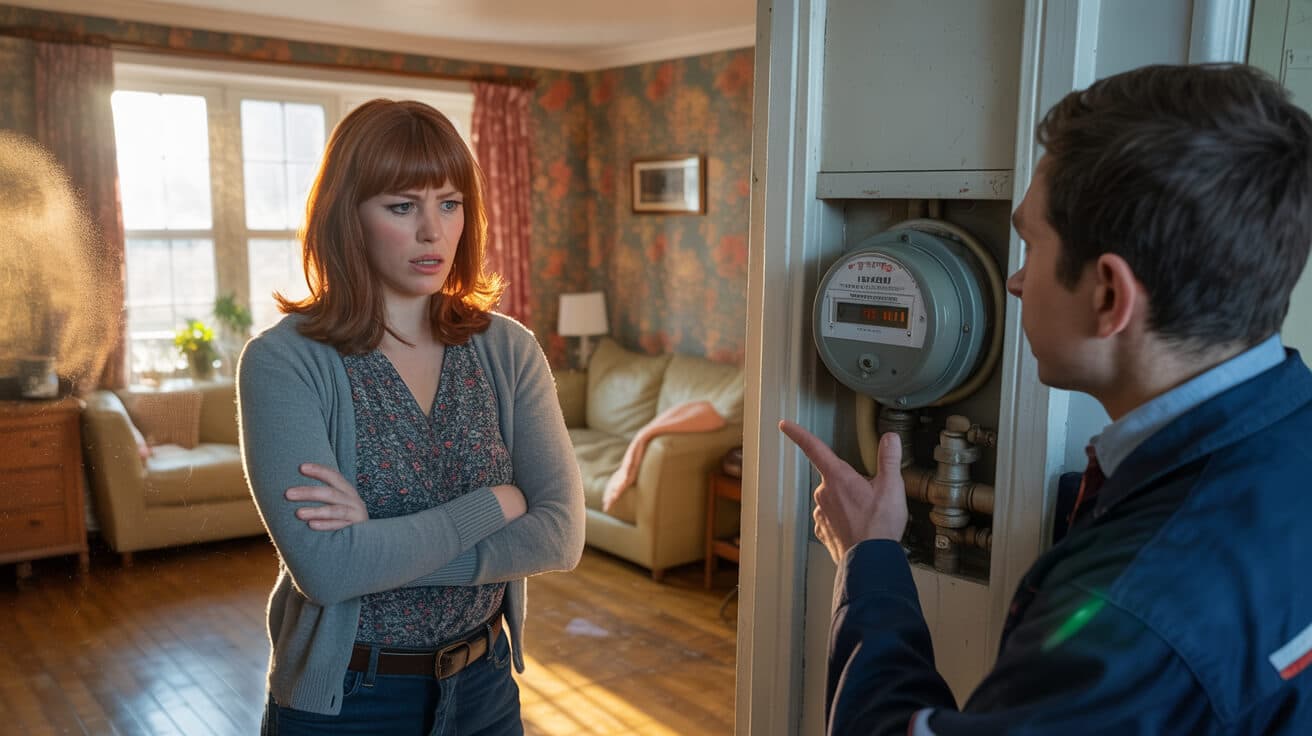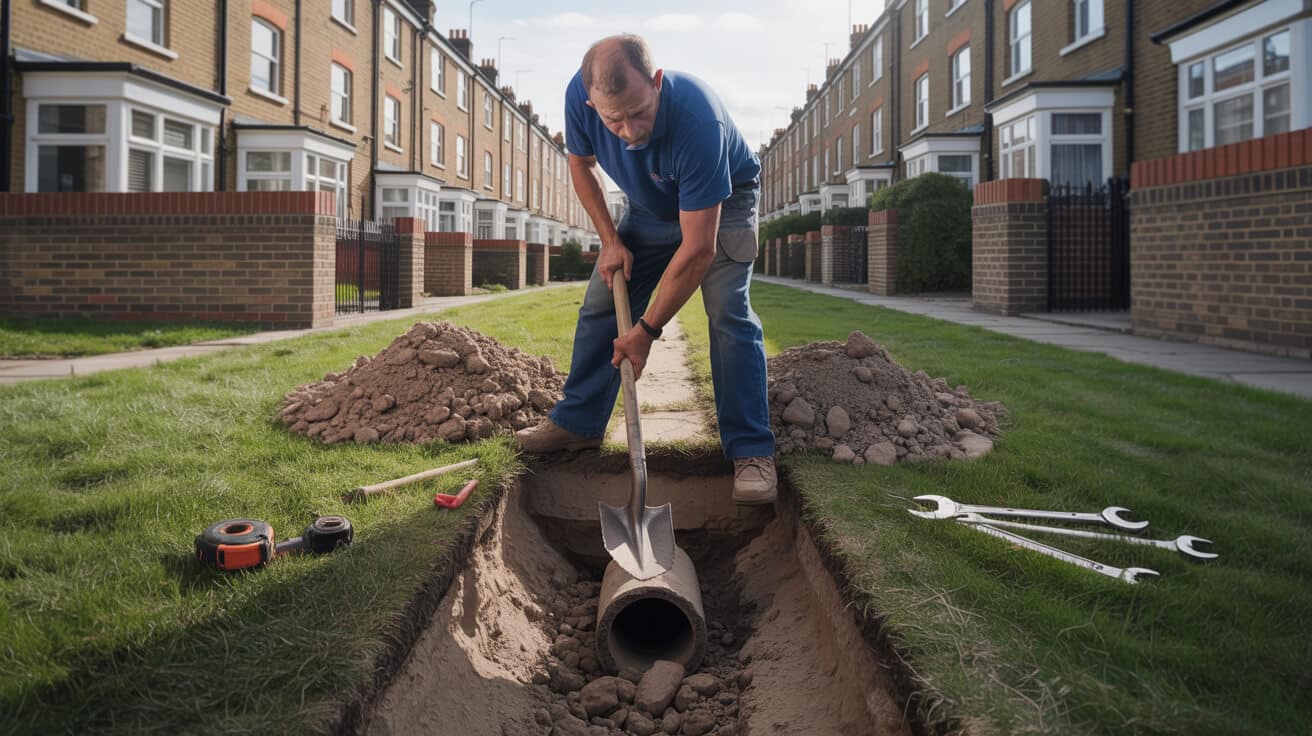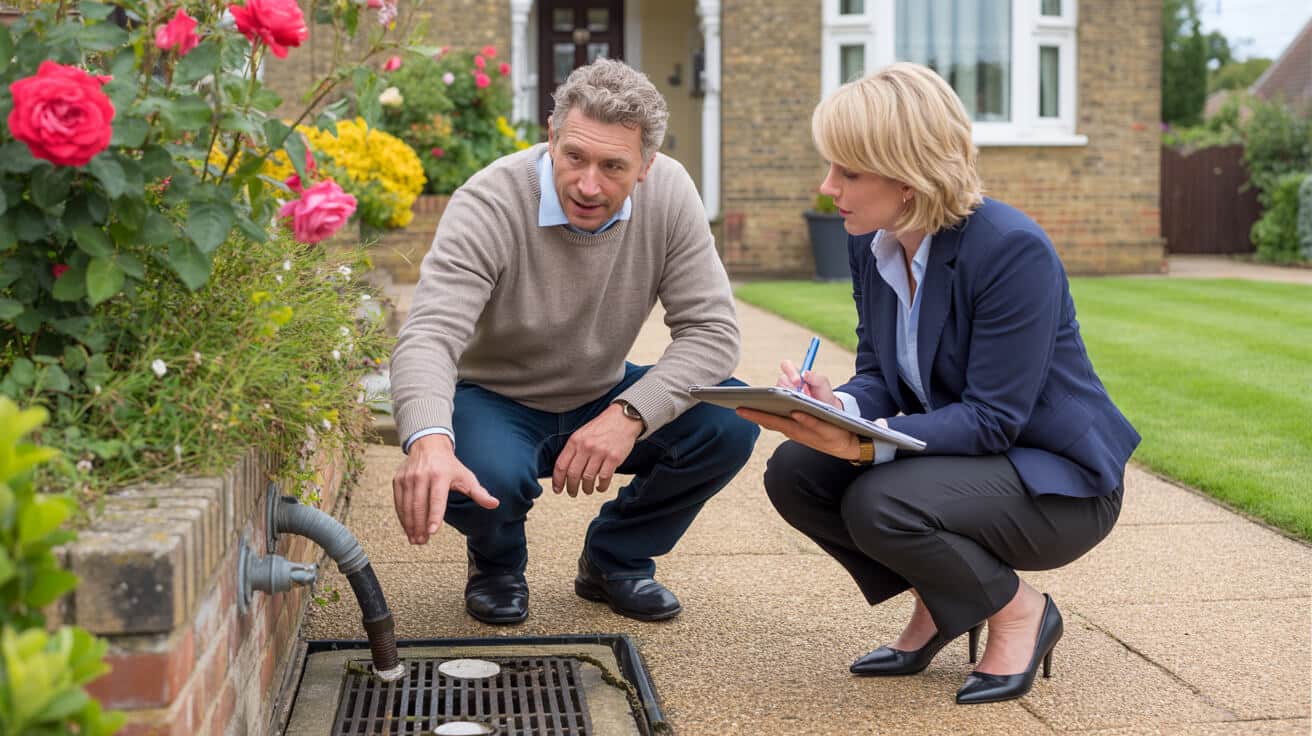 How to Get a Heat Pump Installed in a London Terrace House
How to Get a Heat Pump Installed in a London Terrace House
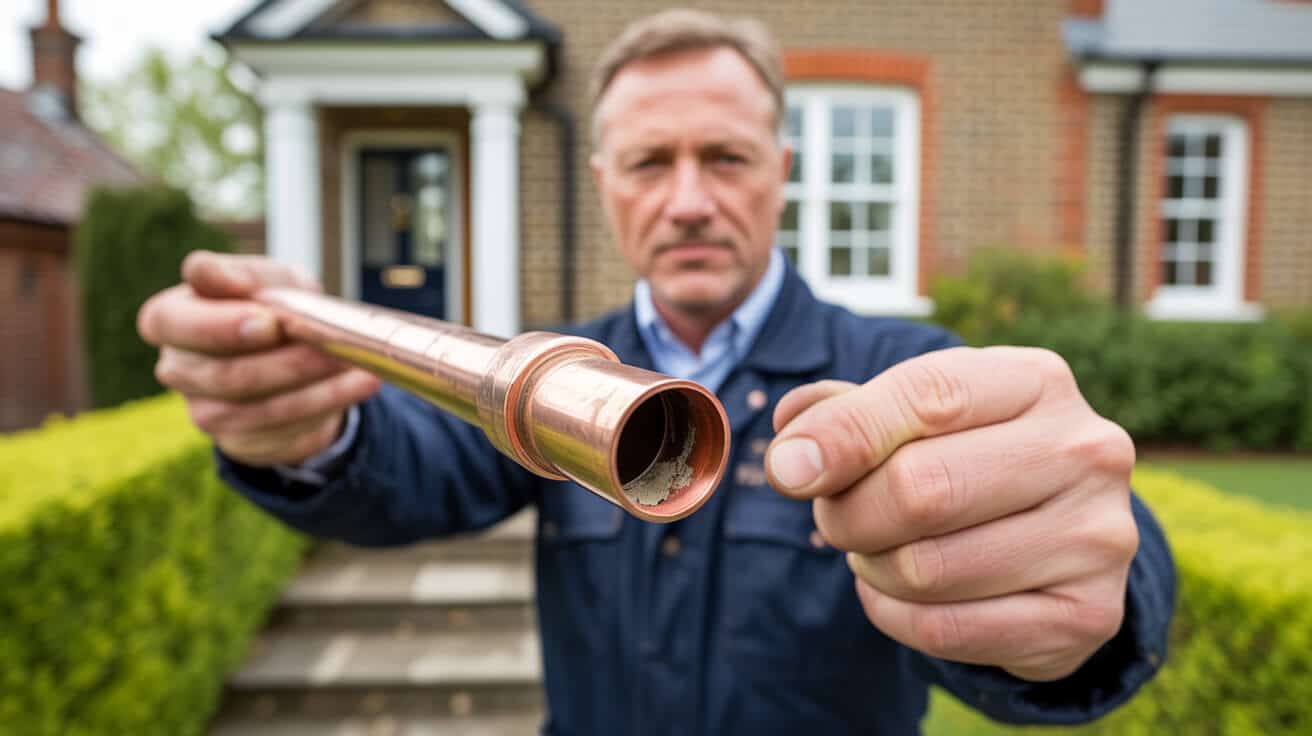
How Soon Should London Terrace Owners Go Heat Pump—and What Happens If You Wait?
Every London terrace owner stands at a crossroads: stick with an ageing gas boiler, or pivot to a heat pump before your property gets boxed out by low EPC scores, rising compliance pressure, and change in what buyers and tenants expect. It’s not just about comfort anymore—delay and you let value slip quietly out the door. The smart early adopters aren’t just techy: they’re securing grants, winning on efficiency, and banking on higher sale or rental appeal, while the rest will scramble when the next wave of rules locks in.
Heating upgrades are now how you protect—or lose—property value in London.
Picture this. Regulations are marching fast, grants have a time limit, and lenders as well as renters want properties that play by the new energy rules. Each year you wait, you risk being pushed to the back of the queue just as costs go up and installer slots dry out. Meanwhile, your neighbours quietly pull ahead—maximising comfort, getting grants that subsidise 30-40% of the instal, and future-proofing their investments for decades.
London terraces aren’t easy cases: boundaries are tight and nobody wants to fight a planning battle. Still, today’s heat pumps are specifically tailored for “awkward” properties—compact footprints, quiet operation, and stealthy instals mean most terraces qualify. Delay means losing out: dwindling £7,500 grants, VAT breaks, and easy pass routes to EPC “C” or better. Do nothing, and you’re left footing a bigger bill with fewer choices, all under a tighter regulatory spotlight.
Early action buys you real control: lock in financial support, pick your installer (before top firms are booked solid), and shape the upgrade to suit your tenants, family, or resale plans. Wait long enough, and it’s like being last in the taxi line after closing time.
The best time to upgrade was yesterday. The second best time is before the next deadline hits.
Are the Rules and Grants in Your Favour, or Will They Slip Away?
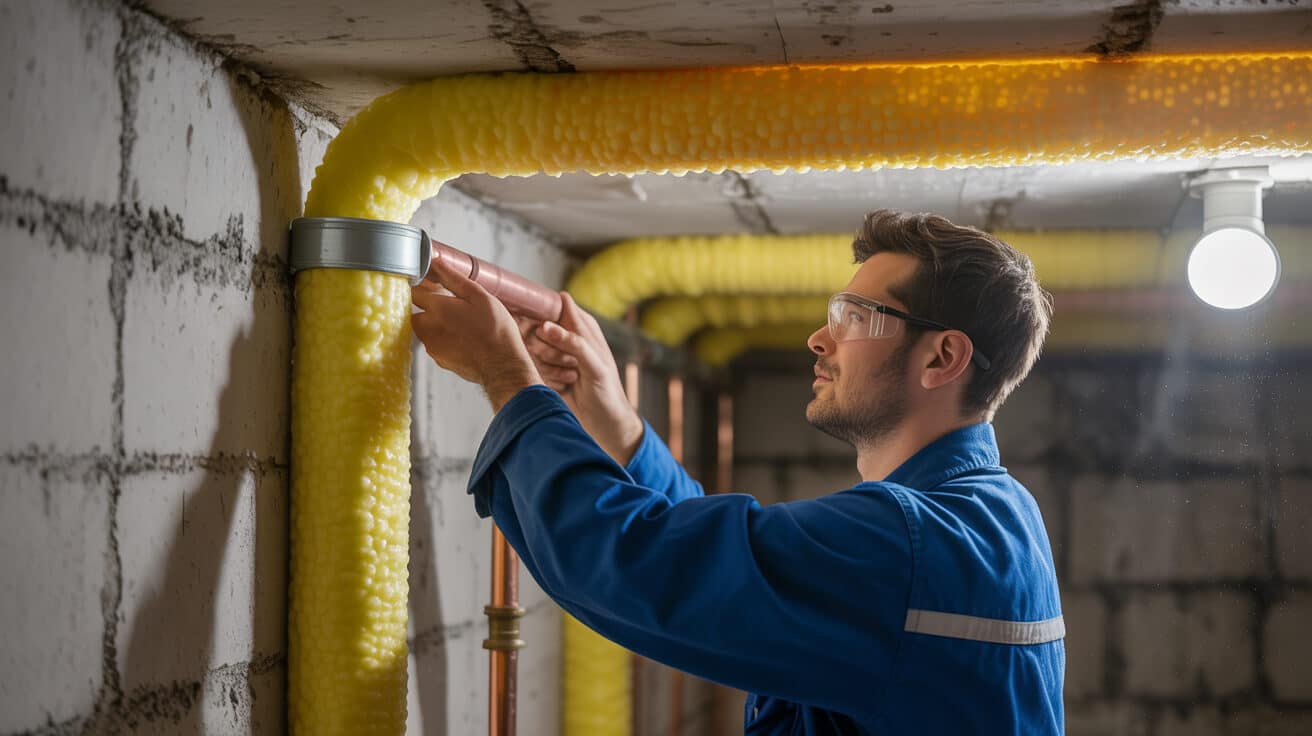
Most policies look stable—right up until a minister changes a grant or the next headline moves the goalposts for EPCs, letting, or new mortgage approvals. You might still believe there’s time to coast, but the window is already narrowing.
The real levers in this transition aren’t advice—they’re deadlines and funding flows:
- Boiler Upgrade Scheme (£7,500):
If you own or let a qualifying London terrace, you can claim up to £7,500 for an air source heat pump, paid directly to certified installers. No form-filling headaches—the firm handles it all (thefloorheatingwarehouse.co.uk).
- Zero VAT (until March 2027):
That’s £hundreds in instant savings—register the job before this ends and you dodge the 20% cost jump that hits new boilers and heat pumps alike next year (gov.uk).
- Permitted Development Rules (May 2025):
Soon most terraces won’t need council permission for heat pumps, provided the instal respects noise/boundary and isn’t in a conservation area.
- Gas Boiler Cut-off (2035):
It sounds far off—but lenders and letting/tenancy rules are acting years ahead, making EPC “C” a basic entry ticket for new leases or borrowing.
- Funding is Limited:
Don’t assume grants or incentives will stick around—funding often vanishes when rules tighten and more people rush to claim what’s left.
Upgrading on your own terms beats being forced to act when choices and funding have already run out.
Owners who respond too late face clogged installer pipelines, price surges, frantic paperwork—and a higher risk of regulatory headaches when letting or selling. Every council deadline or funding tweak leaves procrastinators scrambling. Step ahead and claim control while it’s still available.
Can Terraces Really Take a Heat Pump—or Will Obstacles Stall Your Upgrade?

It’s a well-worn sceptic’s line: “You can’t fit a heat pump in a typical London terrace.” That’s now out of date—most terraces, even if modest, can be served with the right plan and kit. The key is custom surveying, not cut-and-paste quoting.
Here’s how terrace owners and managers are getting it done:
- Smart Outdoor Siting:
Most modern air source heat pumps need less than 1m²—often a side return, small backyard, or unused alcove works. Installers check for a spot with 30cm behind for airflow, and a boundary distance that avoids noise issues (rics.org).
- Quiet Enough for City Life:
New units run at ≤42dB at your fence—less than background traffic and more neighbour-friendly than old-school condenser fans.
- Navigating Party Walls:
Trustworthy installers prep all neighbour comms and notifications for you—no DIY headaches, and far fewer disputes.
- Air, Not Ground:
Forget digging up your entire garden. Modern air source models outperform ground loops for speed, cost, and hassle (thegreenage.co.uk).
- One Unit, Zoned Comfort:
Planning rules only need one external unit per home, but zoning means you get control across floors and areas without extra hardware.
Most ‘awkward’ terraces only look challenging until someone with the right survey tool checks the boundaries.
If you’ve been told a heat pump isn’t feasible, seek a second opinion—especially from a team with real terrace case studies. Adaptable solutions have transformed dozens of “impossible” properties, often including your neighbour’s just last month.
What Actually Happens During a London Heat Pump Upgrade?

Swapping a terrace boiler for a heat pump is more than a lift-and-drop. It’s a proper system reworking, done so you stay warm, hit your EPC “C” or better, and slash running costs.
The phased “no-surprises” upgrade sequence:
1. Insulation First—Don’t Skip
Heat pumps work their magic best in well-insulated homes. Before anything else, sort out loft top-ups (270–300mm is current best practice) and, where possible, cavity or internal wall insulation. This pays off immediately in comfort—sometimes more than any shiny hardware (studiocma.co.uk).
2. Radiators and Pipework—Match to Low-Temp
Heat pumps deliver warmth at lower flow temperatures; to compensate, many rooms need radiator upgrades (~40–80%) and, if you have microbore pipework, a swap to larger pipes for better flow (energysavingtrust.org.uk).
3. Underfloor Heating—Optional, Not Fate
Consider only if you’re doing a full refit. Great, but not a must for most terraces.
4. Survey—Room by Room, Not One-Size-Fits-All
Skip the “standard” quote and demand a room-by-room heat loss calculation. This ensures the upgrade matches your fabric, windows, and occupancy to keep you toasty, not just theoretically “efficient.”
5. Transparent, Itemised Quote
Insist on a fixed, line-by-line quote, not “TBA” fudge. You need clarity for both budget and Boailer Upgrade Scheme eligibility.
Pay for a detailed survey, not a free-at-all-costs salesperson. Knowing heat loss per room saves more than it costs.
With the right sequence, your system quickly pays for itself with comfort and lower bills—and keeps you in the good graces of compliance auditors.
How to Vet Installers So You Keep Control—and Grants in Hand
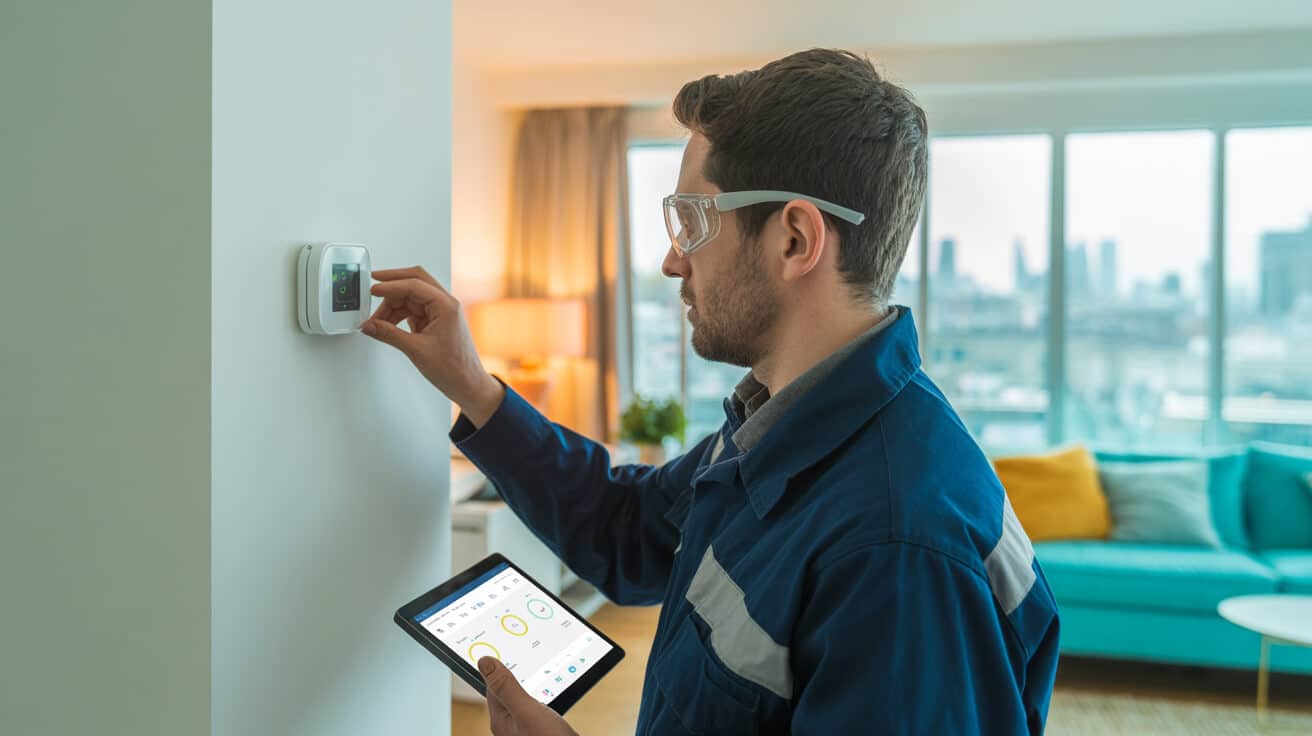
Anyone can advertise “heat pumps for London terraces.” Only a fraction are MCS-accredited, WRAS-safe fitters with a track record in tight or older properties. The installer is the single biggest lever against botched instals or lost documentation—and right now, grant money gets you better access than waiting will.
Set your checklist here:
- MCS and WRAS Credentials:
No grants, no compliance—unless your installer provides up-to-date MCS certification for heat pump work and WRAS approval for all water connections (mcsuk.org).
- Proven Terrace Instals:
Review evidence—ask for before/after photos and references from similar projects.
- Survey Depth:
Accept only teams that do window-by-window, wall-by-wall checks, including insulation, radiators, noise, and boundary compliance.
- Quote Integrity:
Take only fixed, written quotes. Ambiguity or “provisional” lines signal future upcharges.
- Total Documentation:
At handover, you should get certificates, EPC-ready data, upgrade spec sheets, and a compliance checklist.
- Simple Aftercare Path:
Insist on a phone line or service channel with a named person—not just a general “enquiries” email.
Choose an installer who’s in it for the aftercare, not just the invoice.
Give yourself the breathing space to check all the steps above. Documented, transparent processes help you sleep soundly—and strengthen your hand at sale, tenancy switch, or remortgage.
What’s the Day-of-Instal Experience for London Terraces?
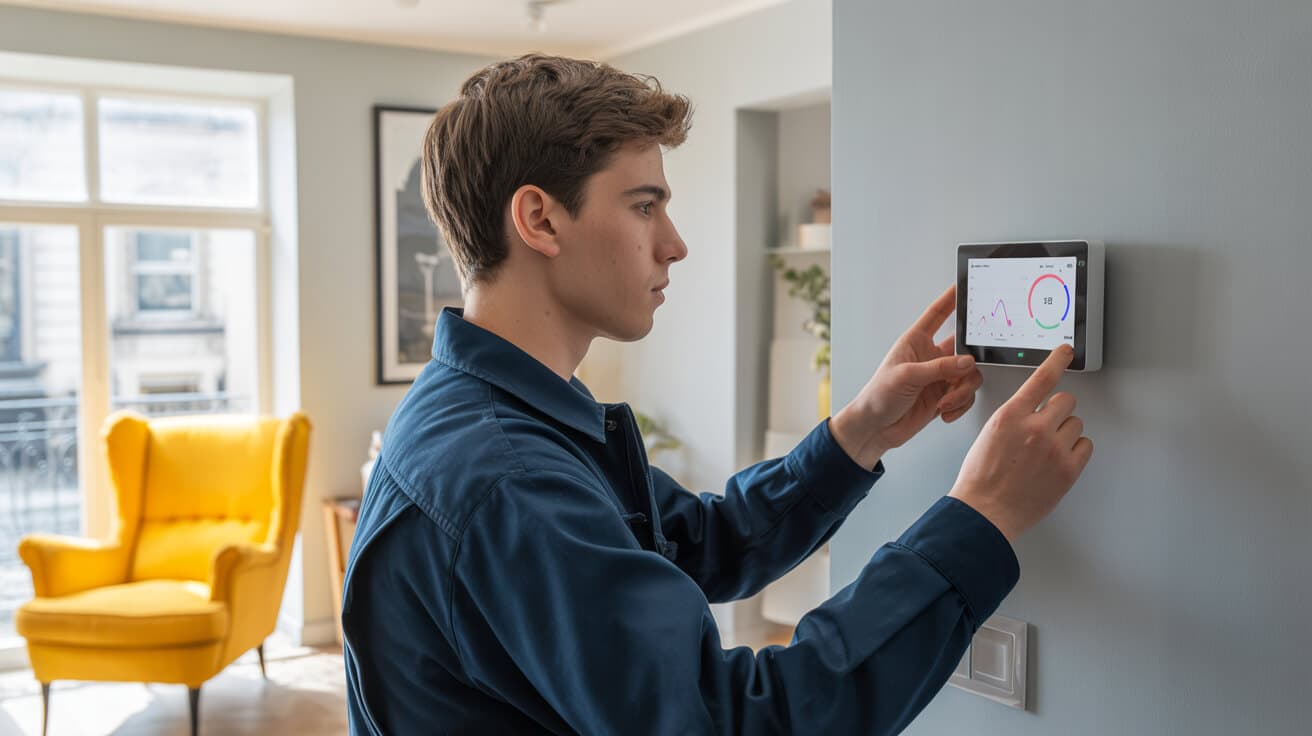
Retrofitting a heat pump isn’t chaos—when managed right, it’s a swift, predictable operation. Mess and downtime are kept low, schedules are tightly managed, and everyone involved knows what happens next.
- Schedule Length:
The norm is 2–5 working days for a full job: insulation, radiators, pipe upgrades, and the heat pump instal itself.
- Disruption Windows:
Heating and hot water pause only for a few hours per stage. Veteran teams coordinate so downtime is always brief.
- Site Protection and Cleanliness:
Installers bring dust sheets, boot covers, and photo-document as standard. Your home (or tenant’s) stays secure and clean.
- Neighbour Notices:
For terraces and flats, reputable installers inform adjacent property owners and, if needed, provide permits or consents.
- One-Visit, Full Completion:
Efficient teams complete all works together—no endless “open floor” or waiting weeks for the next phase.
- System Handover:
Expect a walkthrough with your installer—covering every stat, user control, maintenance routine, and handover of paper/digital docs to support your compliance for future sales or lets.
Great installers are remembered for the tidiness, the rapid schedule, and how easy it is to live with the result.
Set expectations up front; make sure your installer’s plan covers every point here. The process should create less disruption than a kitchen refit—and leaves you future-ready in days, not months.
How Is Living With a Heat Pump Different for London Terraces?

A well-installed heat pump quickly “fades” into daily routine—you’ll notice only the comfort, lower bills, and lack of boiler servicing drama. But a few changes are worth flagging.
Your new heating routine:
- Quick philtre rinses:
Spend two minutes rinsing a philtre under the tap every 3-6 months. Most users do this as part of a seasonal clean.
- Annual system service:
This closes the loop for manufacturer warranties and grants. Typical service cost? About £100–£150 in London.
- Easy, app-driven controls:
Modern heat pumps pair with Hive/Nest/Tado for zippy interface, programmable comfort, and remote troubleshooting (hivehome.com).
- Paperwork archive:
You’ll get a handover folder (paper or Cloud) with user manuals, certifications, photos, and all grant/compliance proofs—ideal for sale, refinance, or letting.
- Direct support:
You should always have a phone number or chat for help and queries—no chasing unknown call centres or automated mazes.
A well-set up heat pump is almost invisible—until you go to sell, let, or fix a fault, and all your docs are right there.
Treat your system to occasional checks, act promptly on alerts or reminders, and you’ll enjoy years of smooth, efficient heating—often with an easier workflow than any legacy boiler.
The Five Common Mistakes That Cost London Terrace Owners—And How to Avoid Them

Even with grants, the best kit, and a strong installer, it’s possible to lose value or compliance by missing a few vital steps. Below are the pitfalls that trip up more terrace owners and landlords than you’d think.
- Skipping Fabric Upgrades:
If you duck insulation or radiator improvements, efficiency tanks and grants disappear. Always demand these are itemised; query any skipped step on your quote.
- Incomplete Paper Trail:
Missed or unsigned certificates, lacking a final pack of compliance docs, or failing to get MCS/WRAS proof up front—these bite later, especially at resale or grant audits.
- Lowest Price Temptation:
Cheap quotes rarely mean full compliance. Watch for “provisional” costings, missing paperwork, or skipped surveys that lead to “surprise” extras.
- Weak Communication:
Book installers who guarantee daily progress updates, firm dates, and neighbour notices—not just “we’ll ring you when ready.”
- Post-Instal Drift:
Demand a clear ongoing support pathway; don’t agree to “job done” and then be left chasing maintenance or troubleshooting in winter.
Protect your investment with clarity—get every step in writing, skip nothing, and build regular aftercare into the deal.
With the right preparation, every pound you spend lasts longer—boosting both resale value and year-by-year comfort, not just ticking a compliance box.
Secure Your Terrace’s Future—Book a Certified Survey With Plumbers 4U
London’s heating landscape is transforming—quickly. The days of ignoring tomorrow’s rules are ending, and every month you wait shrinks the pool of grants, pinches installer availability, and reduces your leverage on compliance.
Plumbers 4U isn’t just a certified installer; we blend WRAS and MCS credentials with a terrace-focused process that puts owners, landlords, and managing agents back in control. Your survey is detailed and honest; your quote is transparent and itemised; your home stays neat, neighbours informed, and the handover equips you for the full life of your system.
- Transparent, detailed proposals:
Know exactly what’s included, with costs clear for every major step—no surprises later.
- Meticulous site surveying:
We check every radiator, window, wall, and boundary to tailor performance for your home (not a generic case study).
- Installers who treat your home with respect:
From clean boots to careful protection, our work speaks to the same standards that won us thousands of five-star reviews.
- User-friendly handovers:
You’ll get an in-person demo and leave with all your certificates, compliance docs, and aftercare info—plus a real line to ring for genuine help.
- Support that doesn’t quit:
Questions on maintenance, warranties, or EPC reporting? We’re here year after year, not just until the invoice is settled.
Book your Plumbers 4U certified heat pump survey now—take command of your heating future and build a London terrace you’ll be proud to let, live in, or pass on.
Frequently Asked Questions
What makes some London terraces unsuitable for heat pump installation, even when they “look fine” from the street?
A London terrace can seem ideal for a heat pump, but looks are deceptive—most disqualifications are hidden, not obvious. Eligibility demands the right external clearance, robust insulation, accessible pipework, and the full spectrum of regulatory sign-off. Too often, owners spot problems late: a narrow side return choked by bins, aged microbore pipes lurking in flooring, or strict planning rules on conservation streets. These issues block eligibility for grants, jeopardise neighbour peace, and can make your investment a long-term headache.
How do you screen early for site-specific “deal-breakers”?
- Map outdoor footprint: Verify at least 900 × 900 mm (plus 300 mm rear airflow) that isn’t boxed in by neighbours or bins. Assess if the unit is shielded from bedroom windows—noise and boundary rules vary by borough, and a unit too close can halt planning.
- Test access and space: Check for a route wide enough for installation and future maintenance. Plan for philtre cleaning, cylinder swaps, or if your home has basements or loft risers where old heating mains may block conversion.
- Inspect insulation quality: Loft and wall insulation to current Part L standards are now a baseline for most UK grants and for stable winter comfort.
- Flag protected or complex status: Listed, conservation, ex-social, or party-wall-adjacent homes each trigger extra documentation or design tweaks.
- Evaluate pipework/radiators: Older homes with 8-10 mm microbore pipes or single-panel radiators often need full upgrades before a heat pump can work efficiently.
Finding a terrace that’s ‘ready’ is less about luck, more about measuring the hidden variables other installers ignore.
Plumbers 4U starts every project with a granular, documented site survey. This gives you up-front answers on both eligibility and next steps—no guesswork, grant guess, or pipeline pain down the road.
What features most often rule properties out?
• Inadequate external space—even a “tiny garden” might block airflow or breach decibel rules
• Subpar insulation (loft, wall, or draughts)
• Microbore or concealed old pipework (hard to adapt)
• Low EPC or no clear upgrade path
• Conservation status, planning limits or lack of neighbour consent
How is the heat pump actually installed in a London terrace, and where does disruption tend to spike?
A heat pump retrofit isn’t a boiler swap—it’s a logistical relay from permissions to technical upgrades to aftercare lock-in. The “pain” rarely comes from the pump itself but from sequencing missteps or missed coordination that expose you to cold spots, lost time, or incomplete compliance. The winning instals are those where, at each stage, nothing slips through the cracks.
What is the precise step-by-step for a compliant, low-stress instal?
- Survey and prep: Secure planning sign-off (if needed), EPC validation, and schedule insulation/radiator upgrades before the main works. Get a line-item scope from your installer covering all necessary modifications; this transparency insulates you from “cost creep” later.
- Installation days (2–5 days): The boiler is decommissioned and removed; radiators and pipework switched as specified; the new cylinder (if required) sited, and the main outdoor and indoor heat pump units installed. Electricians run power lines and enable any new controls or app-based thermostats.
- Commissioning and certification: Every stage is photo-documented and MCS-certified before the system is powered up. Pressure, flow, and system purges are logged. Any “no heat” downtime is minimised—most properties see just a few hours without hot water or heating.
- Handover and training: The final walk-through covers philtre cleaning, app programming, control sequencing, and out-of-hours support. You sign off physically (and often digitally) on work completed, and your full document pack is uploaded for access at any time.
- Aftercare activation: Real teams offer priority aftercare and a digital helpdesk so you’re never alone with new tech.
A heat pump project that fires on all cylinders keeps you in the loop, never out in the cold.
Disruption points mostly arise from insulation or radiator upgrades, temporary water shut-offs, and short gaps in heat supply—rarely more than a day for most London layouts. Plumbers 4U’s protocols schedule noisy or access-heavy works for periods when you, the client, can best manage, and notify neighbours pre-emptively.
Where does comfort (or chaos) usually break down?
• Planning or party wall issues stalling at the last minute
• Delay in custom part delivery (radiators, specialist pipework)
• Incomplete handover—owner left unable to use new smart controls
• Missing compliance triggers last-minute rework
Why are MCS, WRAS, and G3 more than “tick-boxes”—and what documentation counts for grants, compliance, and resale?
The “show me the certificate” moment can make or break your heat pump ROI. Even a flawless instal is half-finished if grants, warranties, and insurance don’t back your investment on paper and in the cloud. UK requirements mean every major instal must pass three hurdles—MCS for system and grant validation, WRAS for water system safety, and (if unvented) G3 for hot water. These are your proof for future buyers, surveyors, mortgage lenders, and freehold management.
What goes in a “legal evidence bundle,” and what does it safeguard?
- MCS Certificate: Certifies installation meets strict UK standards, allowing you to claim Boiler Upgrade Scheme grants and locking in warranty. MCS-accredited installers validate every step—from site-specific room measurements and insulation checks, to commissioning data and terminal photos.
- WRAS Certificate: Verifies that pipework, fittings, and all potable water systems comply with Water Supply (Water Fittings) Regulations. This is what insurers and letting agents ask for during claims or tenant turnover.
- G3 Certificate (where relevant): Legally required whenever an unvented cylinder goes in—protecting against scald risk and confirming that safety valves have been tested and logged.
- Digital/Physical logbook: Chronological record of the job, with stepwise checklists, photos, client and engineer signatures, and a warranty activation trigger.
Owning a full proof pack doesn’t just unlock grant money—it makes your terrace marketable, bankable, and ready for tomorrow’s regulations.
Plumbers 4U always provides, stores, and cross-checks this evidence—removing the classic pain of lost forms and last-minute home sale stress.
Certificates: What actually happens if you “miss one”?
• Lose eligibility for Boiler Upgrade Scheme (and up to £7,500)
• Void or weaken system warranty
• Trigger compliance demands mid-sale or via lender survey
• Breach Water Regs or safety law
What real-world costs should terrace owners budget for heat pump instals, and how can you avoid nasty budget surprises?
Heat pump headlines say £10,000–£14,000. Grants knock thousands off, but the true cost is decided by the quality, age, and upgradeability of your terrace—and by how transparent your installer is about “extras.” A properly specified London retrofit with Plumbers 4U, after grant and VAT relief, often falls to £2,500–£6,500 net, a massive leap from legacy systems.
What’s often missing from “simple” online quotes, and how do the real numbers stack?
| Upgrade Item | Typical Range | Why It Appears |
|---|---|---|
| Insulation/top-up | £500–£2,500 | Grant/EPC compliance, lower bills |
| Radiator/pipework upgrades | £2,000–£4,000 | For low-temp flow, fast comfort |
| Electrical/fuse board | £300–£800 | Safety for new loads, smart controls |
| Boiler removal | £150–£350 | Often skipped in cut-price quotes |
| Planning/building control | £0–£500 | Required for certain layouts/zones |
These aren’t “gotchas”—they’re the difference between a system that works and one that risks grant reversal or comfort loss.
The £500 ‘bargain’ you score on instal can evaporate 10× over if it means late fixes, grant clawbacks, or property value drops.
With Plumbers 4U, you receive a surveyed, line-by-line cost proposal, every required upgrade, and all variables mapped before a contract is signed. No hidden lines, no price drift, no winter regrets.
What parameters really drive towers of cost (or savings)?
• Quality and thickness of existing insulation
• Condition and capability of pipework, rads, and mains supply
• Borough/consent specifics (planning, noise, boundary)
• Selection of smart controls and aftercare features
Where do most London terrace heat pump retrofits fail, and what best practices guarantee you don’t become a warning storey?
The worst project failures in London terraces don’t start with the kit—they start with missed paperwork, mismanaged upgrades, or an installer who ghosts after the cheque. A properly done project leaves you, your buyer, and your insurer with a process trail and confidence for re-sale, compliance check, or property audit.
What defines a “done right” upgrade, and how does this keep problems at bay?
- Daily progress tracking: Your installer delivers regular written updates as each milestone is passed—from access changes to plumbing switchover to commissioning.
- Neighbour liaison: Controlled, scheduled notifications and polite notices minimise disputes in shared boundary environments or party-wall–dominated terraces.
- Documentation handover: You receive both physical and digital copies of every accreditation and a full logbook.
- Aftercare secured before payment: Only release funds once you can reach your dedicated support chain—never a generic call centre.
| Failure Scenario | Preventative Best Practice |
|---|---|
| Scheduling confusion | Daily/batch SMS or email updates |
| Document loss | PDF and hard copy handovers |
| Final quote drift | Signed, line-item binding quotes |
| Noise/consent disputes | Proactive communication with neighbours |
| Service gaps | Aftercare contacts delivered at handover |
The best handover is the one you never need until it matters—because you already own every answer, code, and contact.
Plumbers 4U models every project as process-plus-paperwork: you finish with certainty and systems, not just hardware.
How can owners spot a “cowboy” process or prevent aftercare lapses?
• Sudden vanishing after instal—no clear escalation or backup
• Verbal-only handovers and vague aftercare promises
• Missed or unsigned documentation, unclear service pathways
• No “helpful nudge” for maintenance scheduling
How does living with a heat pump change daily comfort, maintenance, and control for London terrace households?
The day-to-day with a modern heat pump is nearly invisible when done right—you simply expect consistent warmth, stable bills, and lower noise. Terraces that get a professional upgrade see a leap in remote control, app visibility, and compliance comfort.
What does ongoing maintenance truly look like—and what’s the “ownership journey” long-term?
- 3–6 month philtre rinse: Most owners do this themselves, guided by reminders (and occasional top-up from the instal team).
- Annual engineer visit: At £100–£150, this signed-off check is essential for warranty, grant, and EPC continuity.
- Smart controls: Fine-tuning or monitoring temps at any hour via apps (Hive, Tado, Nest) is standard.
- Paperless audit trail: Certificates, logbooks, and service records are maintained digitally—critical for home sales, rentals, or insurance claims.
Bills usually drop or stay steady in the first winter, provided insulation and sizing were properly addressed. Comfort improves—the system is quiet, and support is often just a phone tap away.
When you hardly notice your heat pump running but can see every answer in-app, you’ve hit the new standard for London living.
Plumbers 4U’s approach to aftercare includes automated maintenance nudges, access to live help, and rapid engineer callouts.
What “future proofing” steps keep you ahead of regulatory or service risks?
• Archive every digital cert and log in a secure cloud or email
• Pre-book service reminders; don’t rely solely on suppliers
• Use app diagnostics to pre-empt minor issues before they escalate
• Keep closing documents for quick property resale or audit scenarios
What are the five most costly mistakes homeowners make with heat pumps in London terraces—and what does bulletproof prevention look like?
The traps rarely have to do with the technology itself. They hinge on incomplete upgrades, missing documentation, or “cheapest contractor” syndrome—causing repeated grant failures, aftercare black holes, and patchy legal status.
Which classic traps are fully avoidable with the right sequence?
- Skipping insulation or radiator upgrades: —even when “optional” in a bid, these define both comfort and compliance.
- Accepting vague or incomplete quotes: —if costs aren’t mapped line-by-line, surprises are inevitable.
- Choosing solely on price, not references and compliance record: —buyers regret this at resale or claim time.
- Neglecting schedule and aftercare planning: —without these, you lose track mid-project and post-project.
- Accepting a missing or verbal-only handover: —no paperwork means no grant, warranty, or resale value.
Every Plumbers 4U instal is stepwise, checklisted, and documented—survey to sign-off. You sign contracts with every variable mapped, every certificate issued, and a direct line to a team who know your name, not a bot.
Your next buyer won’t care about make or model—they’ll want the evidence you did every step by the book.
Ready to transform your terrace, lock in savings, and own every answer at resale? Plumbers 4U’s engineering team is ready to design your full eligibility path, line every cost clearly, and deliver a smooth, fully-warranted upgrade—secure yours now for a compliant, comfortable, and future-ready home.

